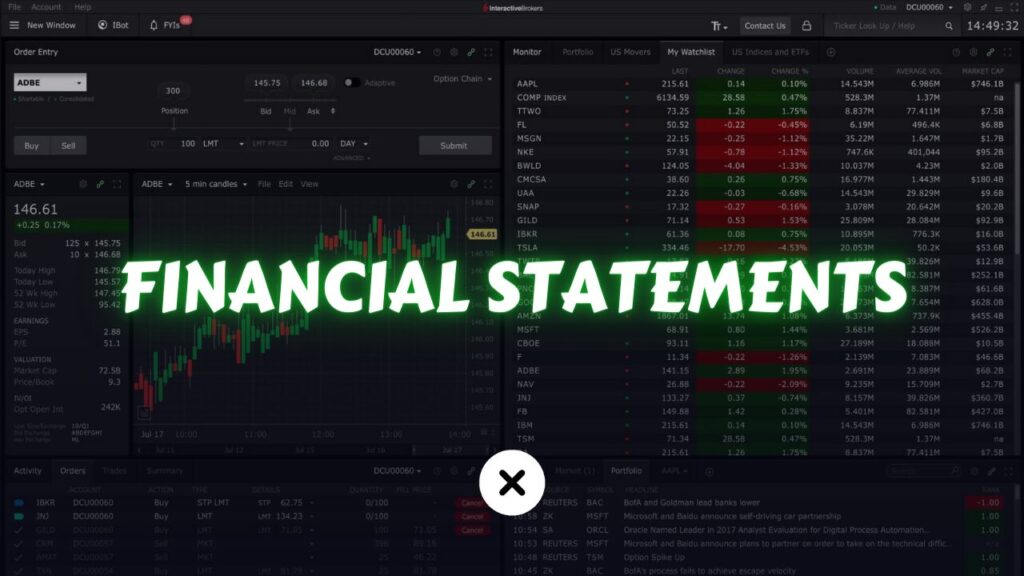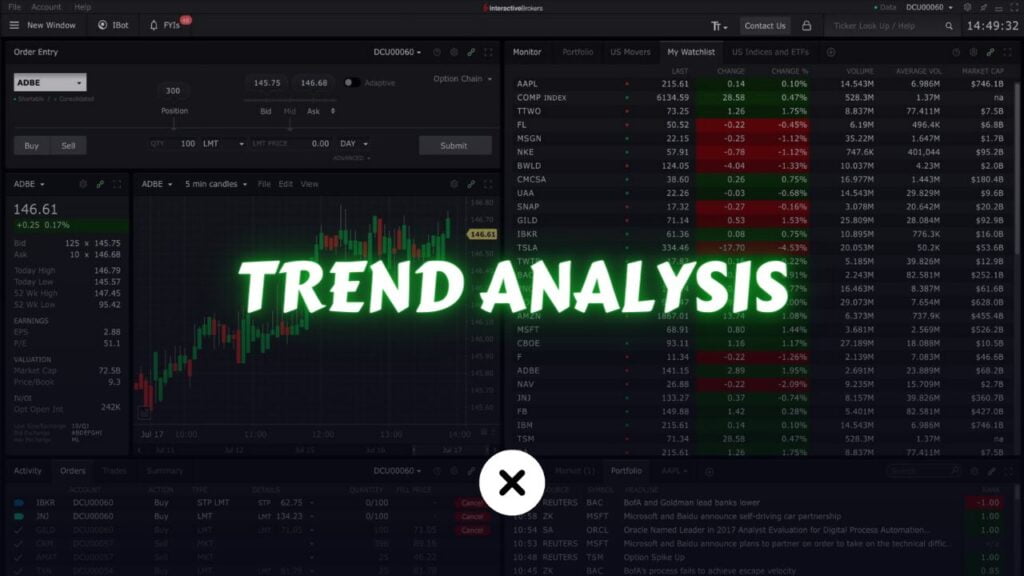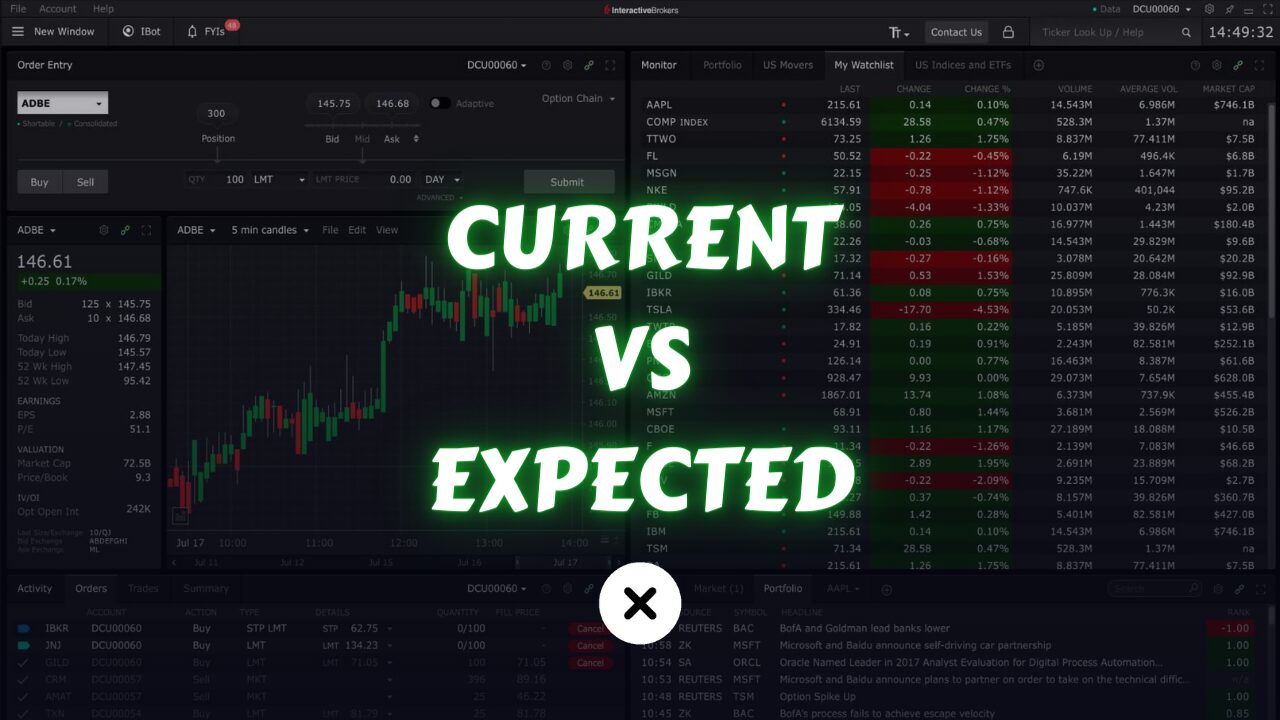
What is Expected Value of a Stock?
When you buy a stock, you’re not just getting it for what it’s worth right now. You’re also thinking about how much it might be worth later on. This idea applies to all kinds of investments, like buying a house, art, or fancy watches.
The value of something right now isn’t the only thing that matters. What’s expected in the future is also really important. If you think something will be worth a lot more down the line, you might decide to buy it now. This is all about looking ahead to what’s expected in the future.
That’s why people invest in stocks of companies that aren’t making money yet. Some companies keep losing money, but they’re spending it on things like research, making new products, and trying new ideas. The hope is that these companies will eventually start making big profits.
So, if there’s a belief that a company will earn a lot more money in the future, investors already think about this when they’re deciding how much the stock is worth right now.
Example:
Why would anyone want to buy a company that’s losing money right now? Let’s look at a 10-year period and compare two companies: Company A and Company B. Company A is expected to make $200 million next year, $250 million the year after, and $300 million in the third year. These predictions help us figure out how much the stock is worth.
Now, Company B starts off with a loss of $200 million in the first year, then $150 million losses in the next two years. But in the future, it’s expected to start making $2 billion and then $3 billion. Even though Company B isn’t making money now, its stock would be worth more than Company A’s. That’s because Company B is expected to make more money in the future, according to the projections.
This is why in stock trading, what’s expected in the future matters a lot more than just looking at what’s happening right now.
Sometimes, you see a stock with a high price-to-earnings (P/E) ratio, like 50. This means you’d be paying 50 times more for each share compared to what the company is earning right now. It might seem like a lot to invest in that stock, especially when there are others with lower P/E ratios. But people might still do it because they expect that company to grow a lot in the future.
Take a look at Tesla,
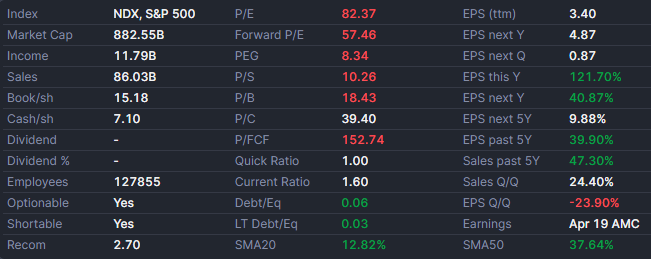
The current price-to-earnings (P/E) ratio is at 82.37, which means you’d be paying 82.37 times more than the company’s current earnings for each dollar of profit. Even though this ratio seems high, there are still reasons why someone might want to buy this company. The main reason is the expectation of higher earnings in the future. Right now, the earnings per share (EPS) is 3.40, but there’s a projected EPS estimate for next year, which is 4.87. This shows that the company is expected to earn more next year compared to this year.
To figure out the value based on next year’s earnings, we can look at the forward P/E ratio. This ratio takes into account the expected future earnings, helping investors understand how much they’d be paying today in terms of the P/E ratio. So, investors don’t just look at the current price-to-earnings or other ratios; they also think about future values and expected numbers when they decide to invest.
Both the earnings per share (EPS) for the next year and the forward price-to-earnings (P/E) ratio are important measures to consider when evaluating investments. The EPS for the upcoming year tells us about the expected earnings growth, while the forward P/E ratio helps us understand the value based on those expected future earnings. That’s why it’s important to look at both of these ratios to make smart investment choices.

Right now, the stock is selling for $279.82. Let’s imagine a situation where everyone expects the company to hit a certain earnings per share (EPS), with the current EPS at 3.40 and the expected EPS forecasted at 4.87. But if the company falls short of these expectations and reports lower earnings, let’s say an EPS of 4.50, the stock price will probably go down. This happens because investors had already set the stock’s price based on what they thought the earnings would be, and since the actual earnings were lower than expected, the company seems less valuable than people originally thought.
On the other hand, if the company exceeds expectations and reports higher earnings, like an EPS of 5.10, the stock price will probably go up. In this case, the stock was initially priced at $279 based on the idea that the company would hit an EPS of 4.87. But since the company did even better than expected and earned more, the market sees the company as worth more, which pushes up the stock price.
When you look at charts on TradingView, you’ll see big changes in prices on earnings days. Usually, if a company doesn’t meet its earnings estimate, the stock tends to go down. But if it beats the estimate, the stock usually goes up a lot, sometimes even shooting up dramatically.
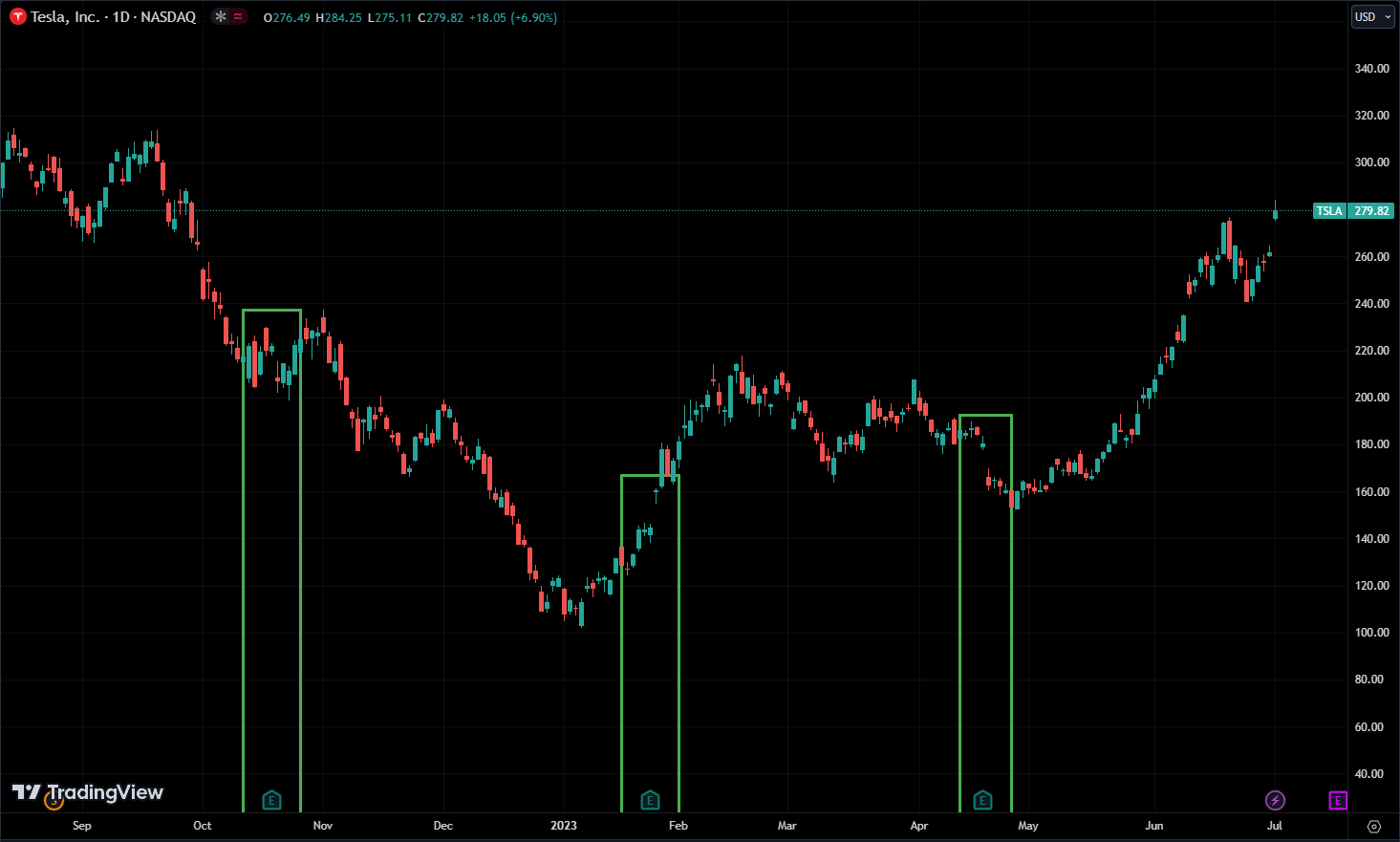
Conclusion
You value a product not just by what its worth today but what it’s worth today and what you expect it to be worth in the future.
